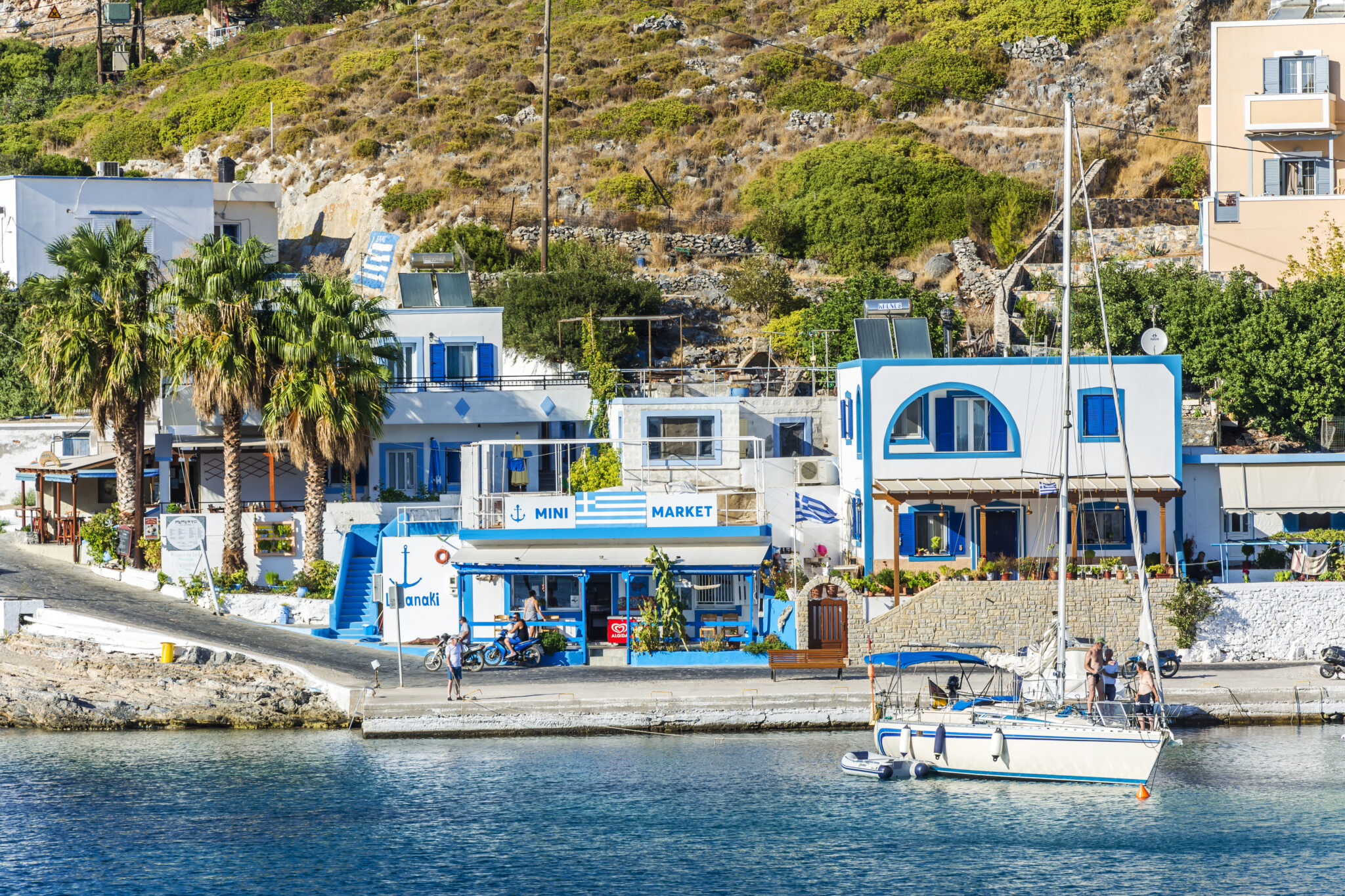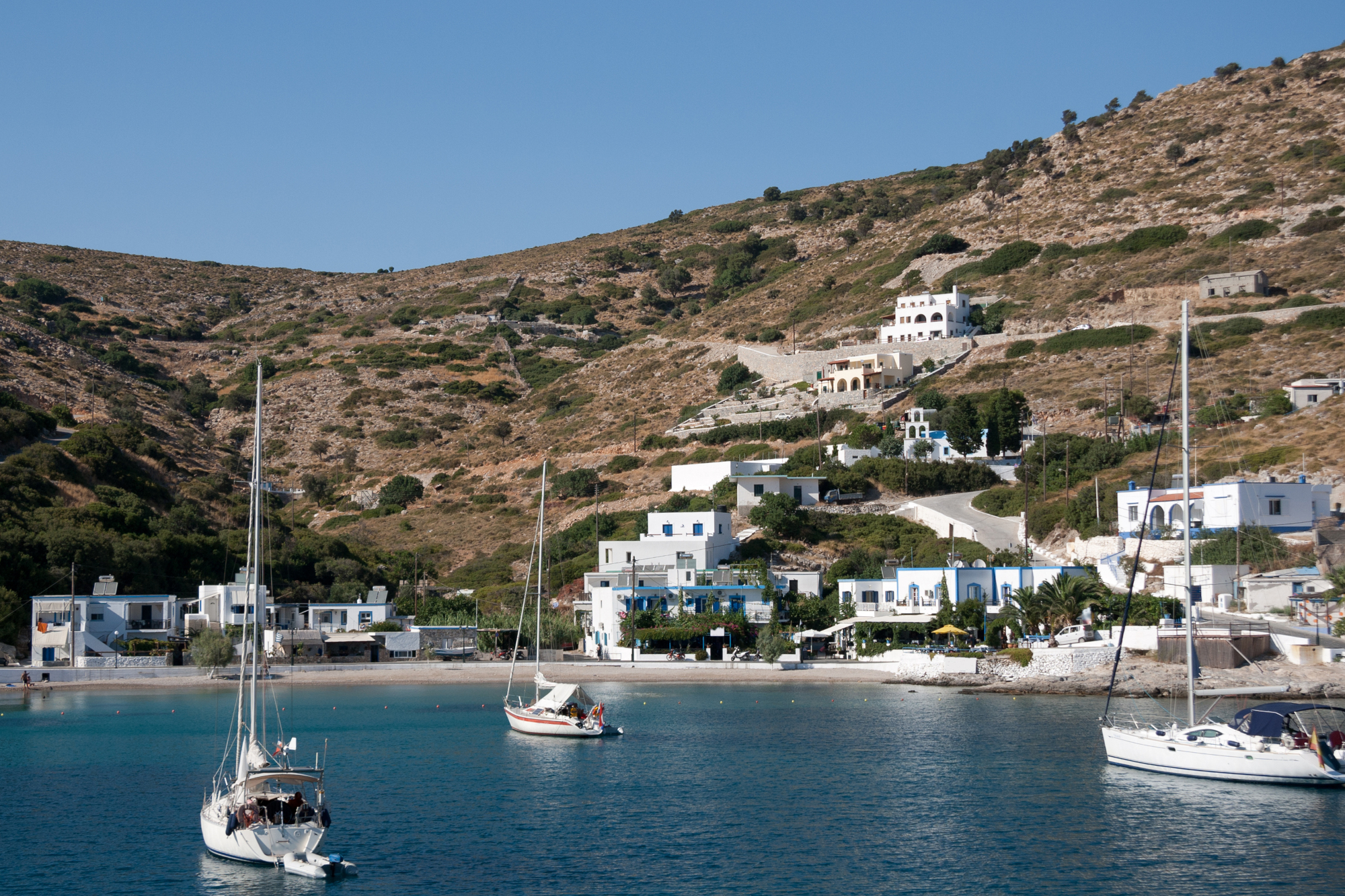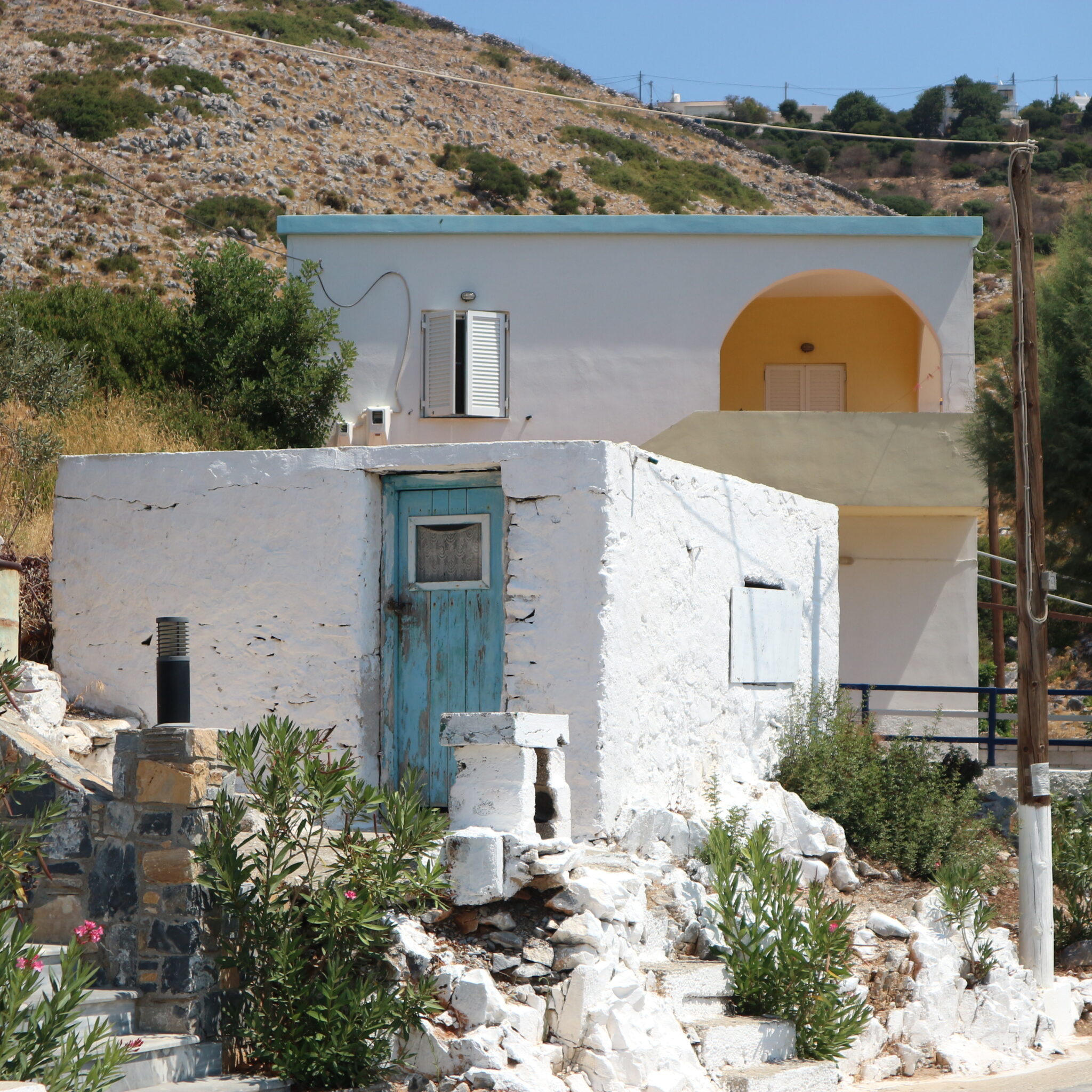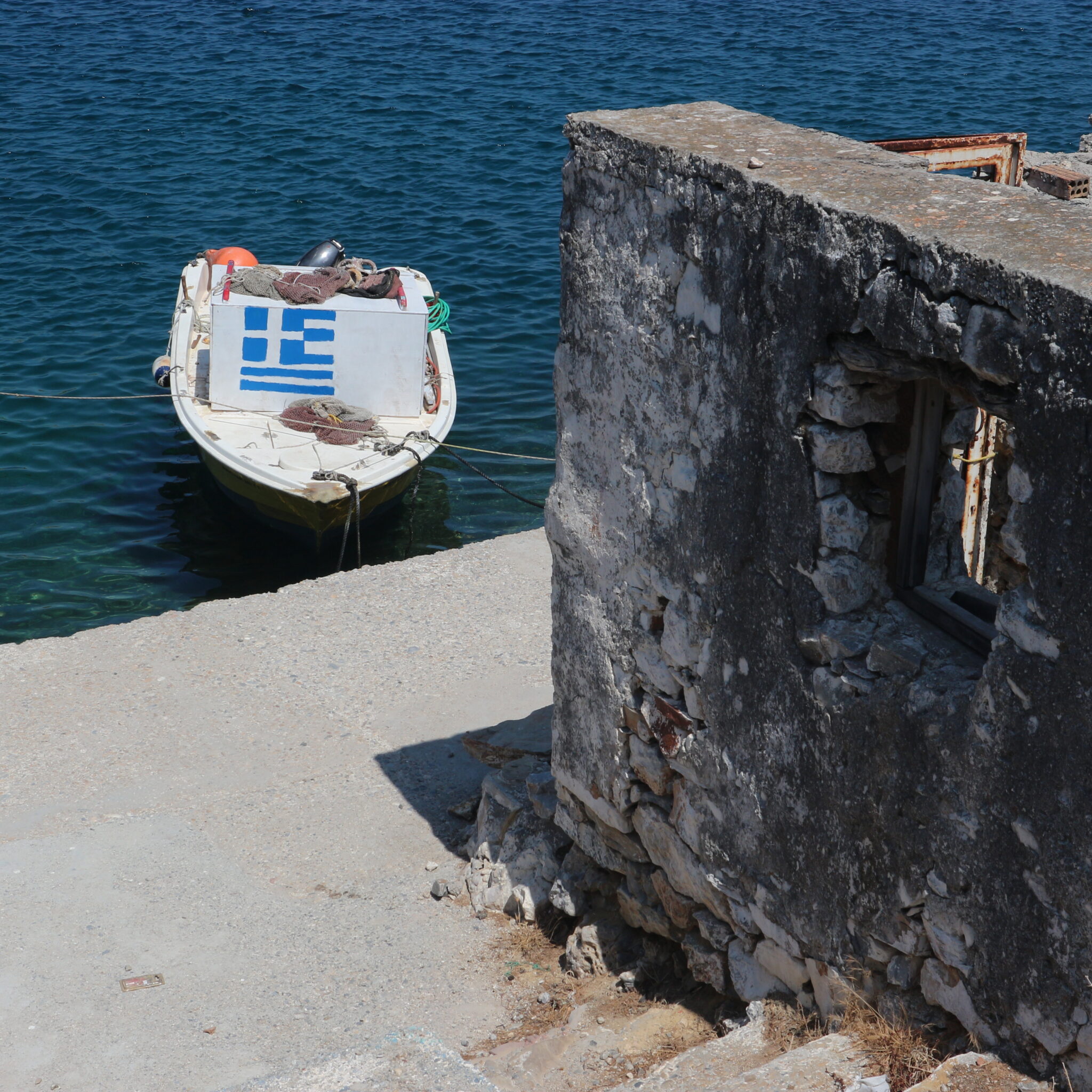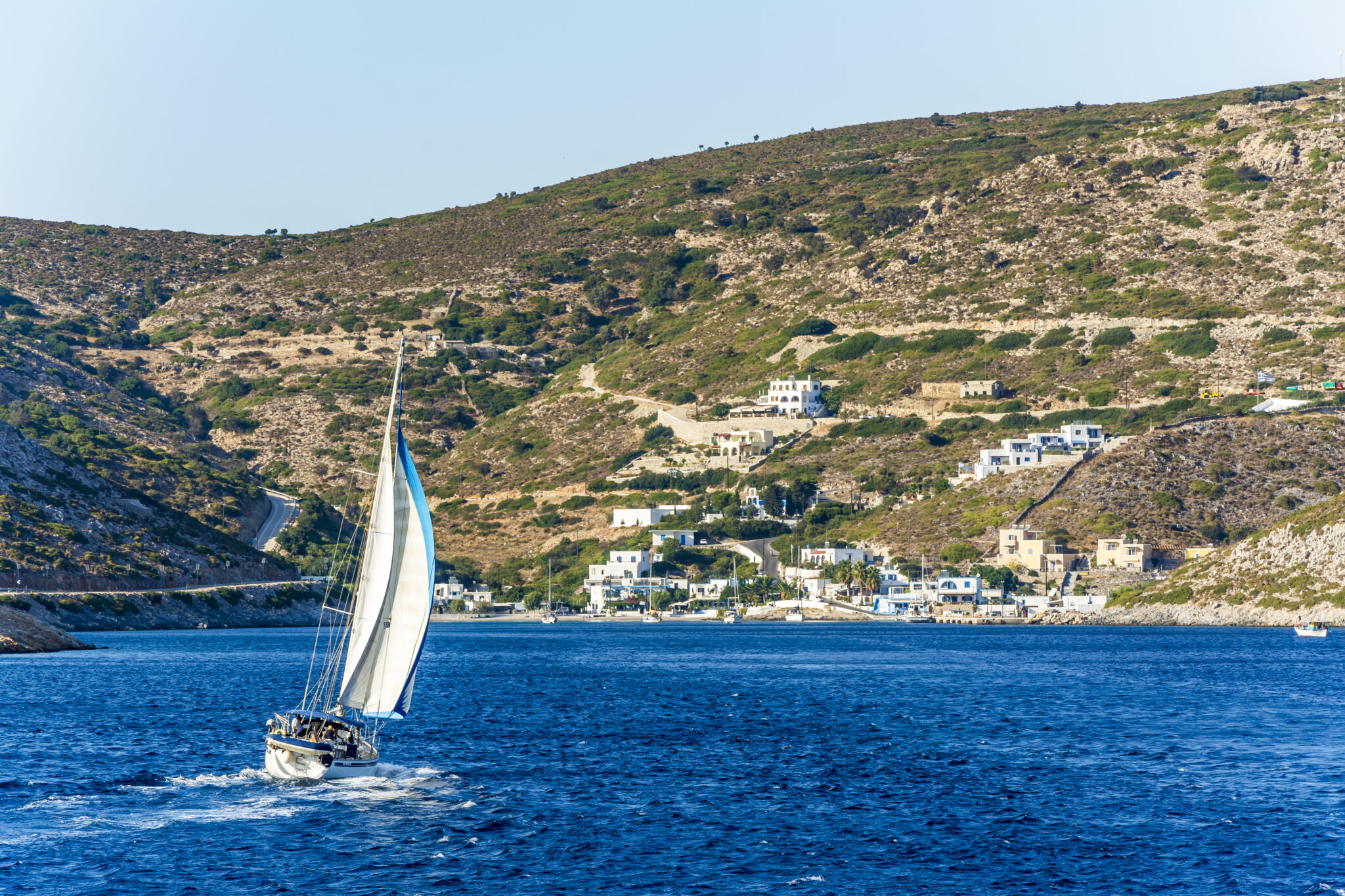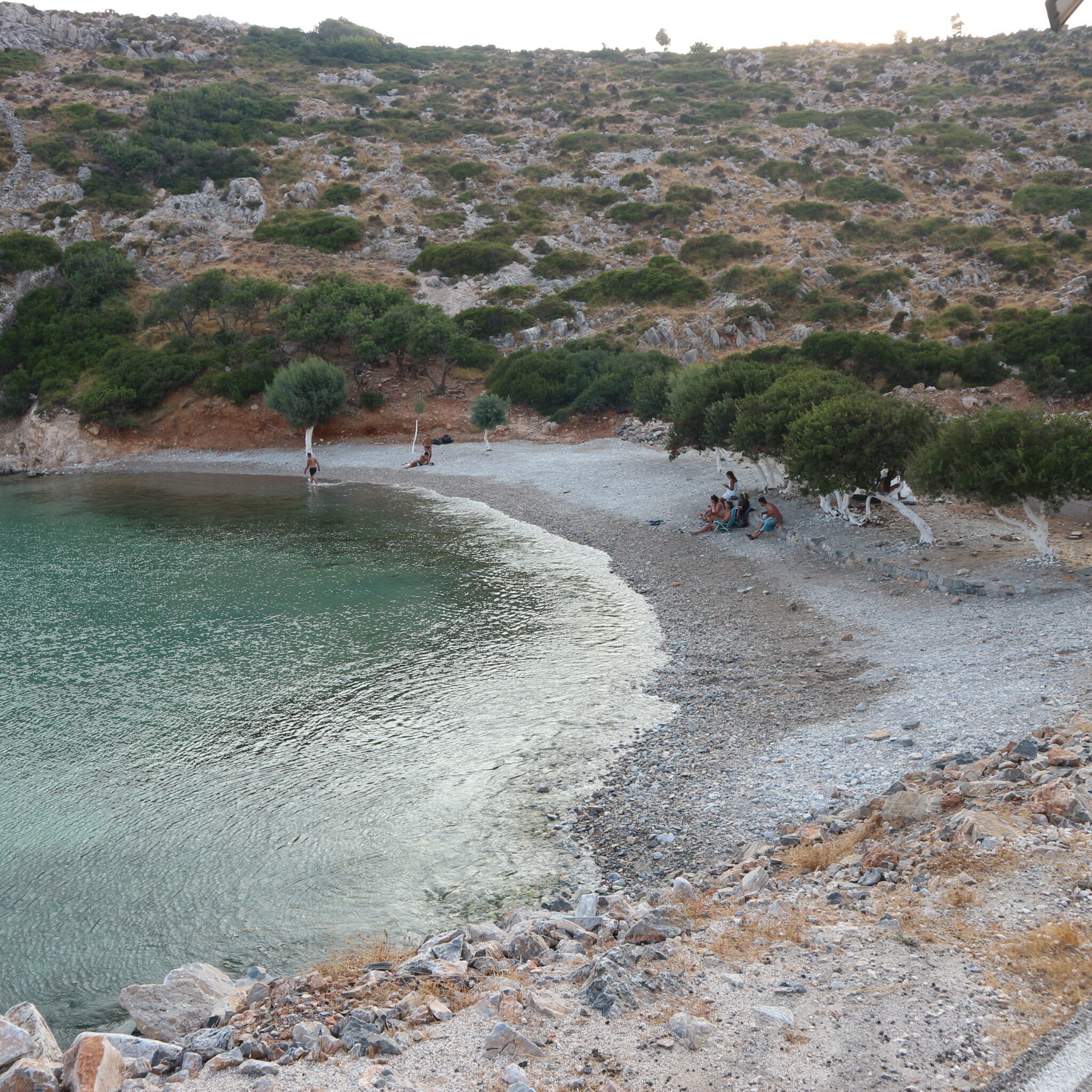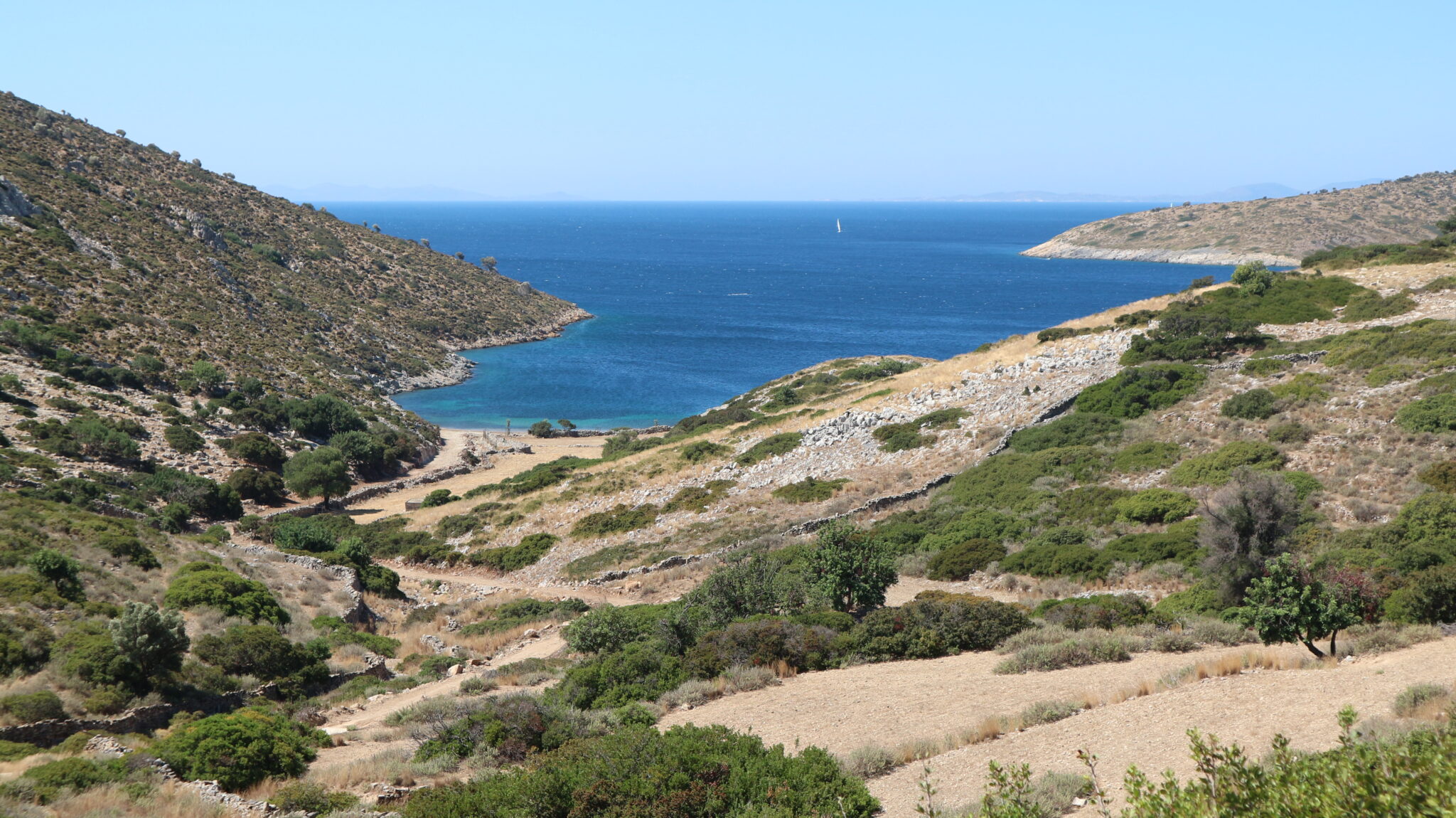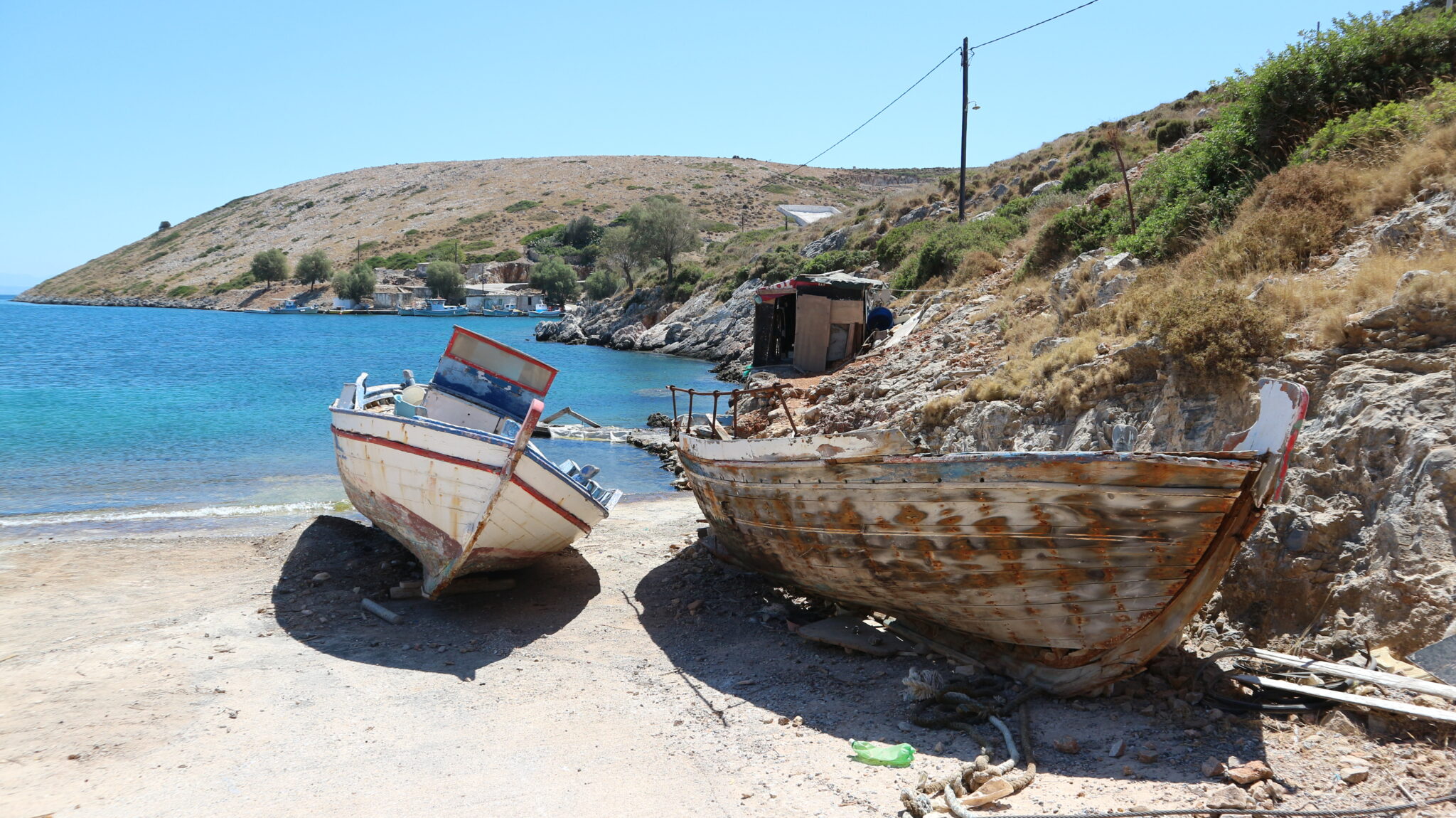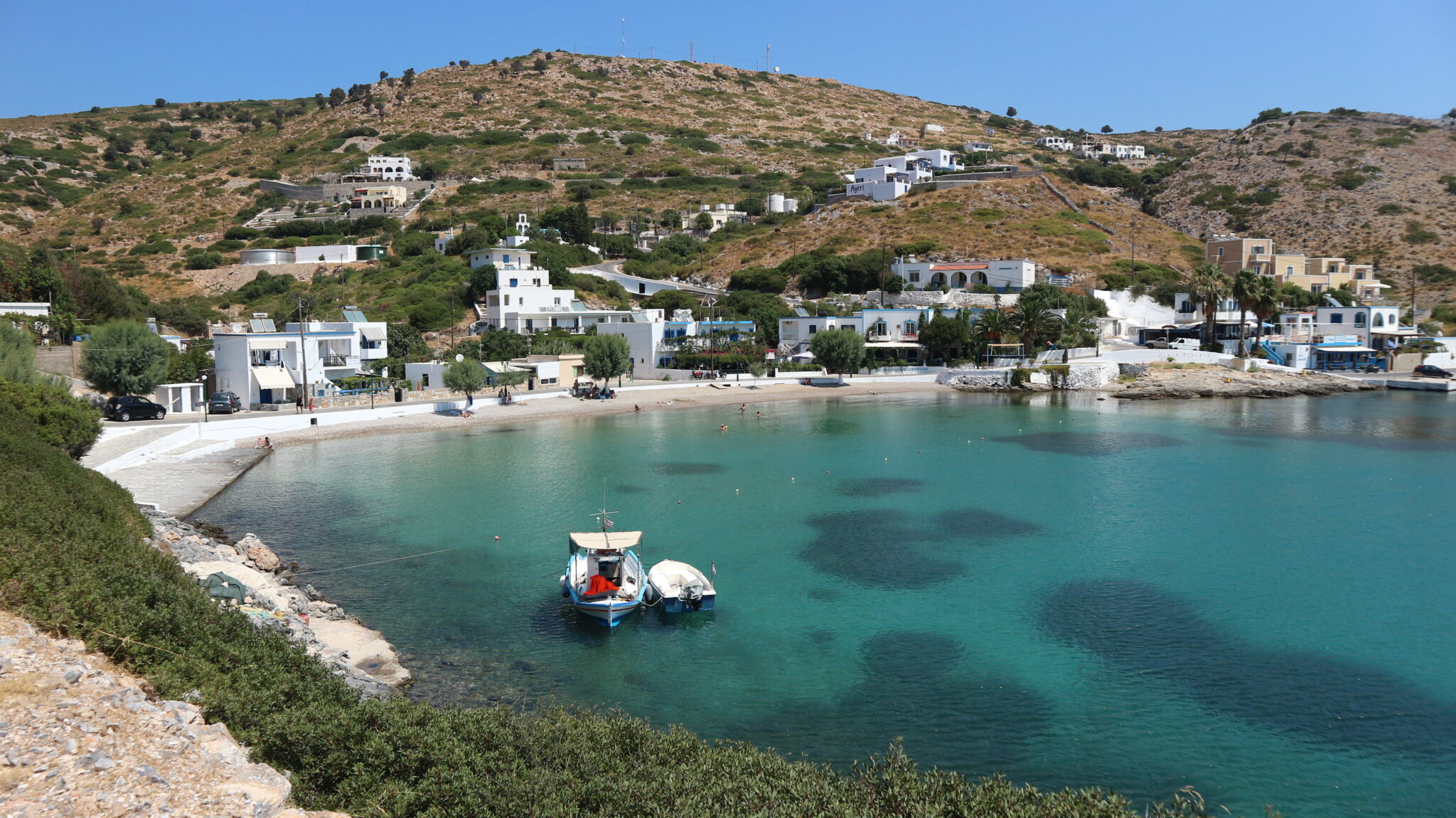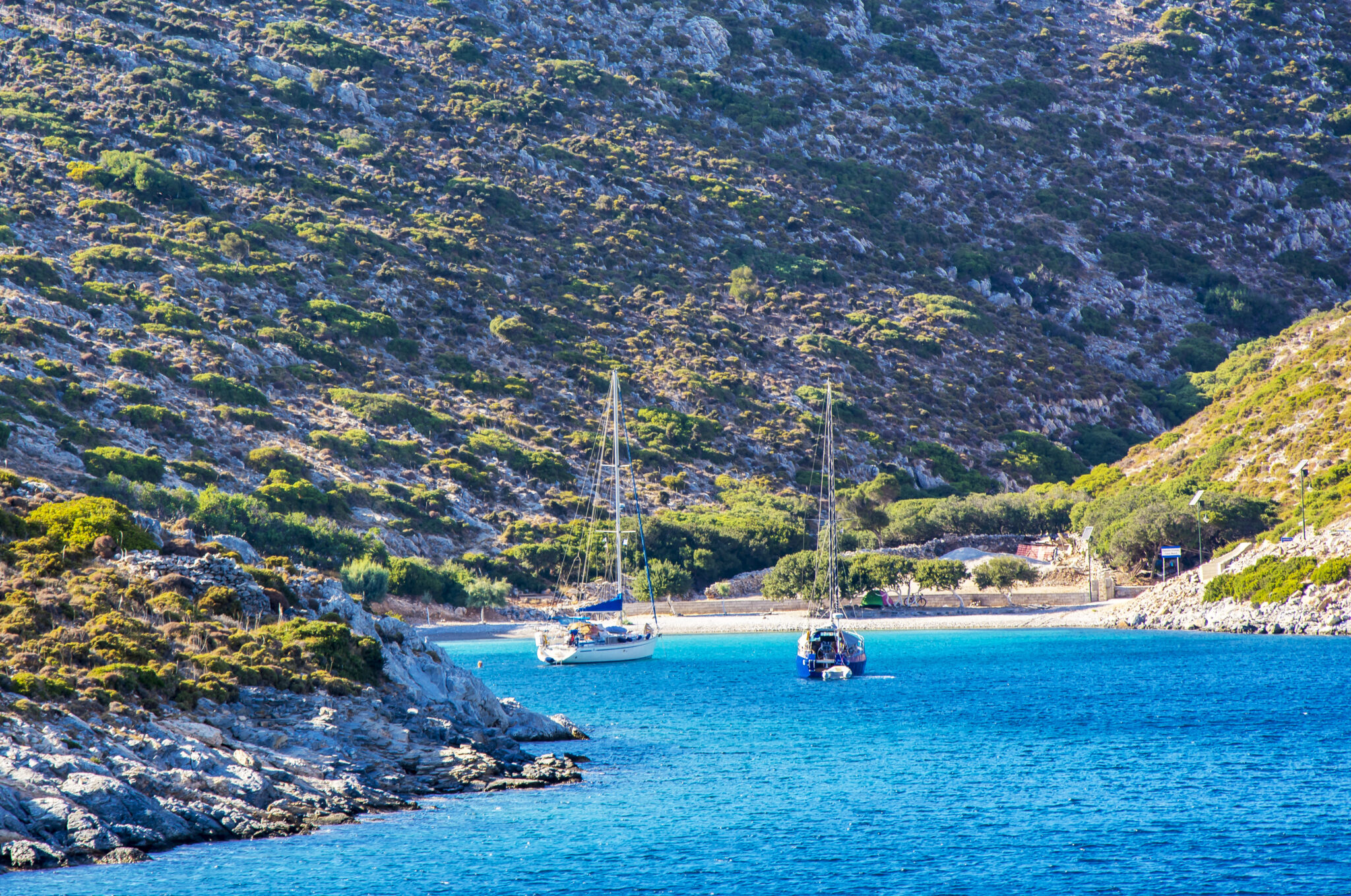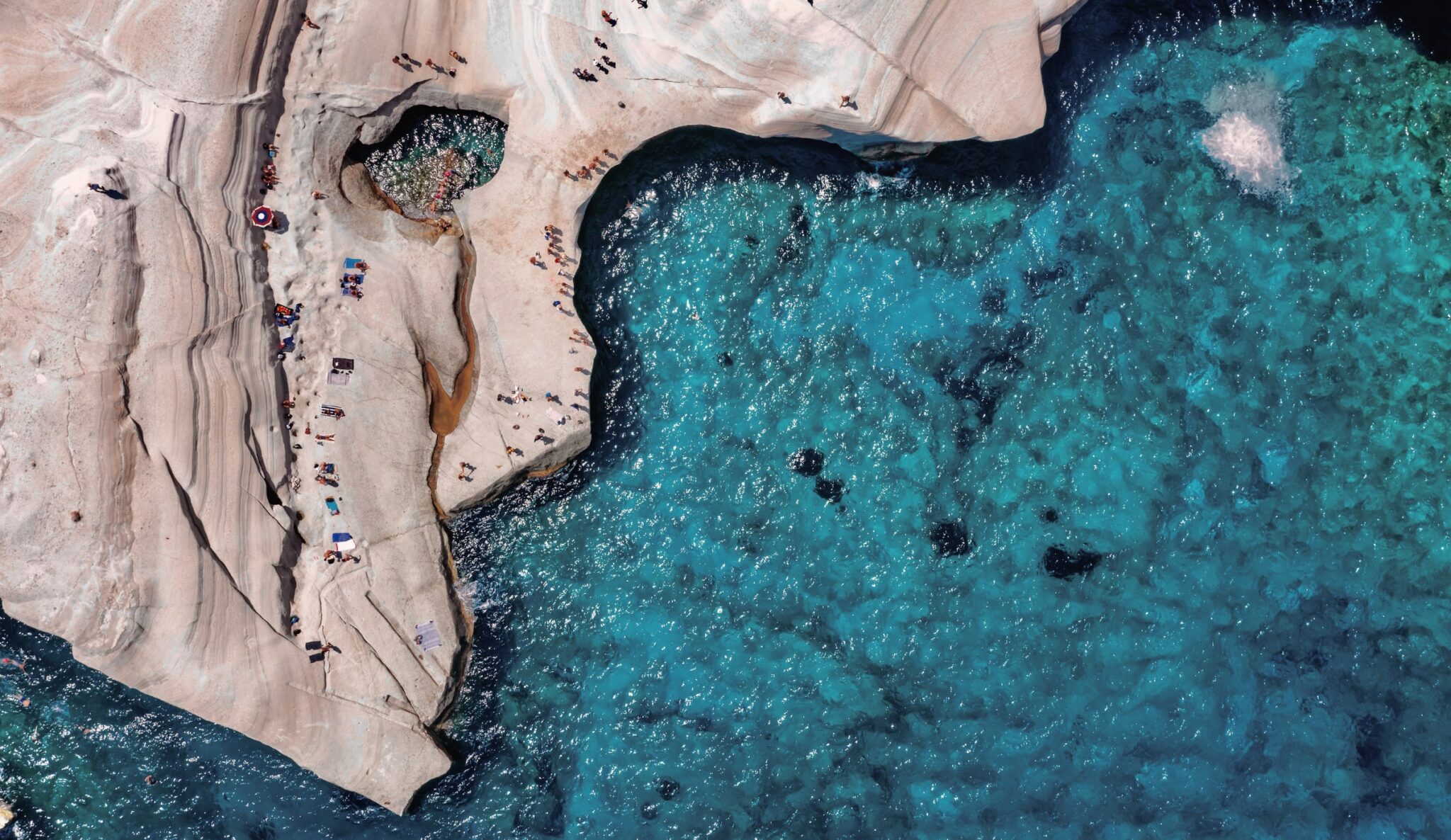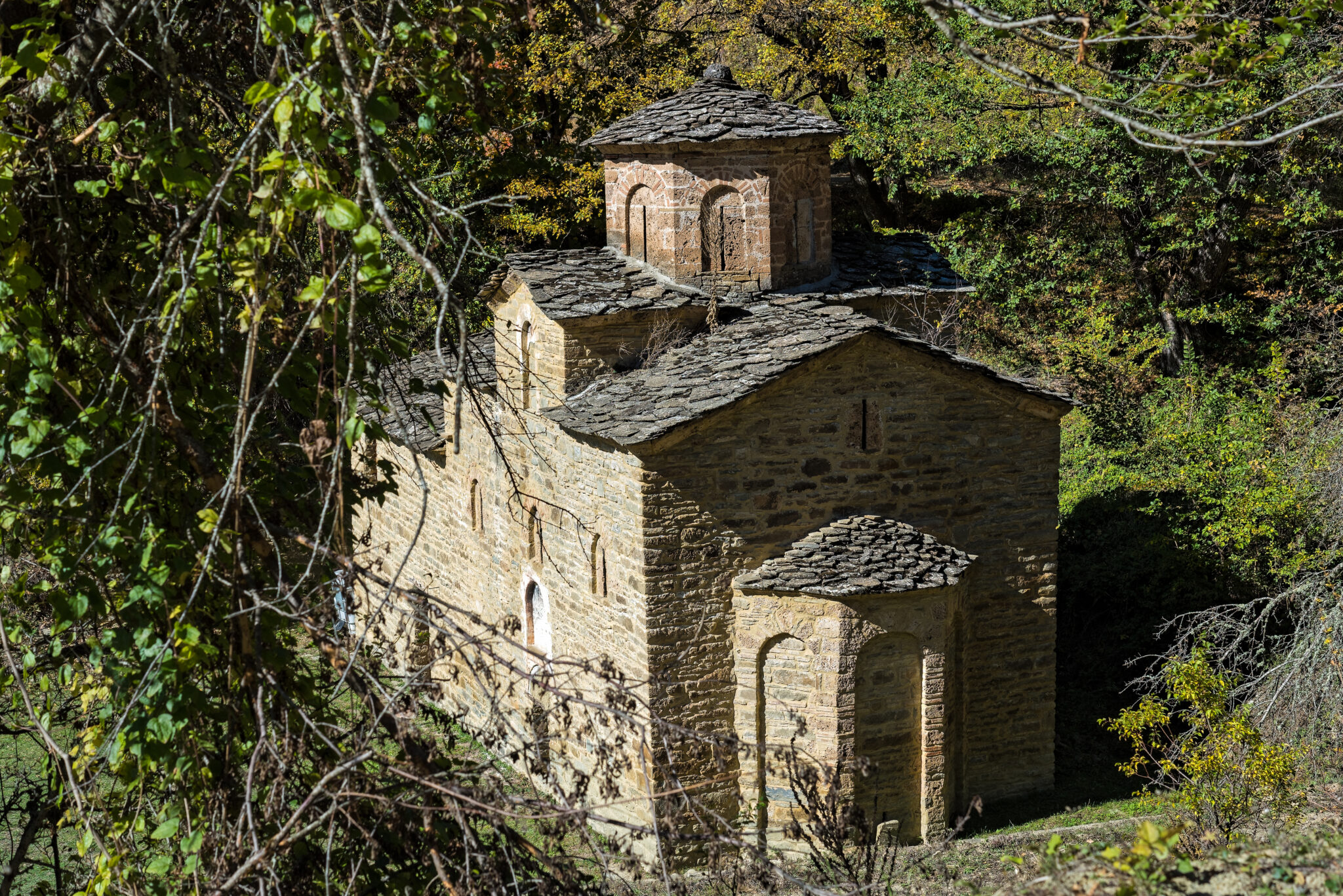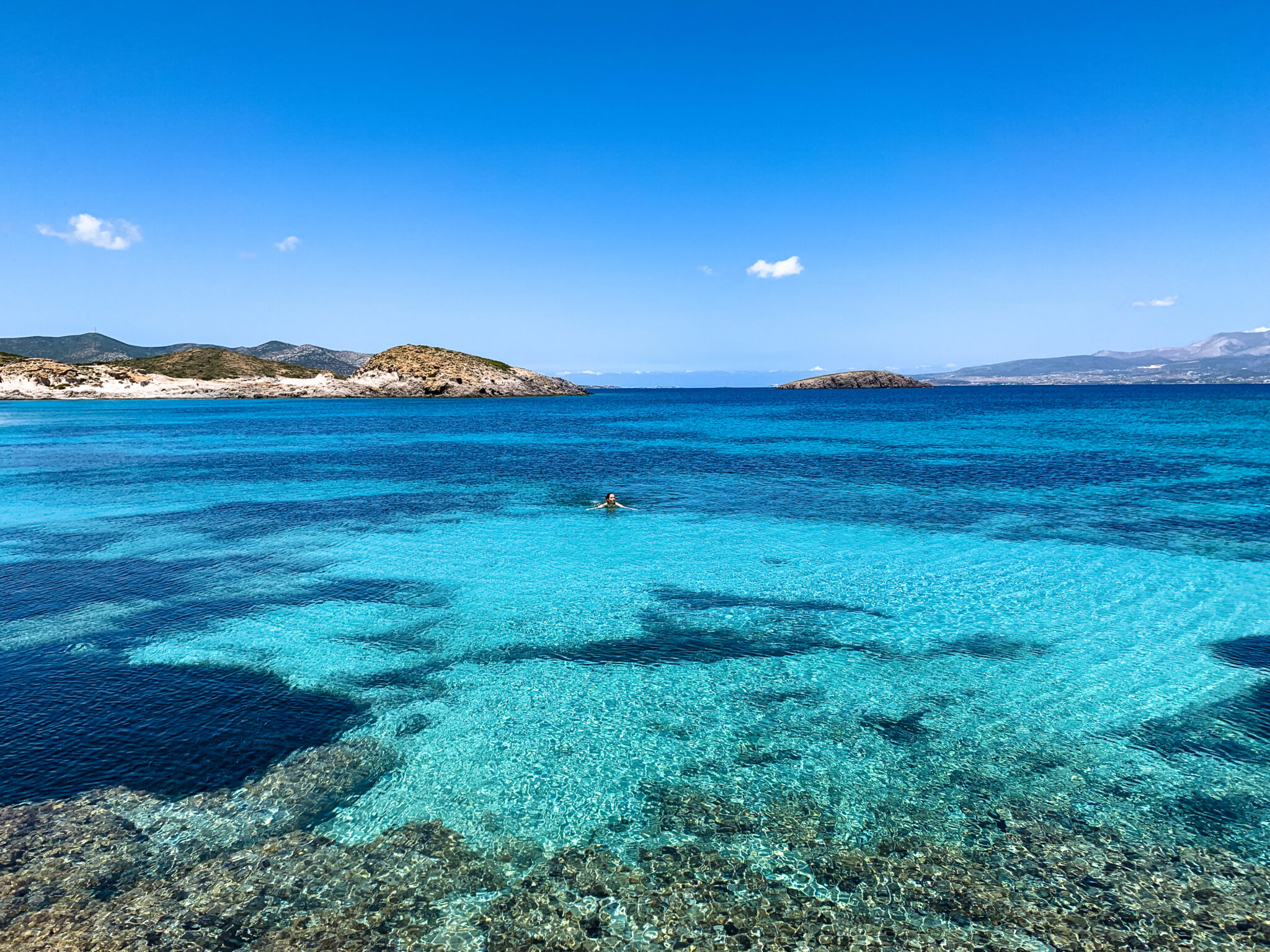The northernmost island of the Dodecanese, Agathonisi is an ideal destination for those seeking a quiet and alternative holiday away from the crowds who surge to the larger islands. It’s a barren place with low, sparse vegetation, apart from a few tamarisk trees that offer protection from the blazing sun, yet it also has an unforgettably singular quality.
Although the island is very close to popular Samos, a charming sense of seclusion befalls its visitors immediately upon arrival at its port. In Agathonisi, time and human contact take on a new meaning. Travelers blend with locals in cafes and tavernas and follow slower rhythms that feel outlandish to anyone inhabiting urban centres. Here, time seems to have stood still, remaining in a bygone era, when social networking only occurred in small localities and communities that bound people together with the glue of tradition and collectivity.
At last count, there are only 186 permanent residents on the island who are mainly engaged in rearing livestock, agriculture and fishing, while in recent years some have also ventured into tourism. The touristic development of Agathonisi can be described as minimal, but efforts to boost it are continually growing and as a result a small tourist infrastructure with rooms to let and some tavernas has started to appear. Additionally, as part of the development and preservation of this little island and its residence, important infrastructure projects have been carried out, such as building a school with a high school, a Citizen’s Service Centre (KEP), a Post Office, a Port Authority, a municipal dental clinic and so on.
Agathonisi has two settlements, Megalo Chorio (large village) which extends to the port of Agios Georgios, is the largest and oldest. The latter was built in a geographically strategic location to protect it from pirate raids. Over the years, the village has grown and spread to the port of Agios Georgios, which has a wide and large south-facing pier, sheltering the fishing boats and yatchs from the northern winds.
The second settlement, Mikro Chorio (small village), is built opposite the Megalo and only a few inhabitants still live there. Visiting Agathonisi is easy, via a regular ferry boat to and from Leros, Patmos, Lipsi and Samos, there is also a modern heliport.
Where to swim
Spilia Beach: The beach hsa combination of sand and fine pebbles and you can find coolness and shade under the tamarisk trees that bend towards the seductive, crystal-clear waters. At some point, you’ll probably be joined by wild goats coming down to drink water from the sea, their bells breaking the hypnotic sound of the lapping sea.
Gaidourolakos: Also called Gaidouravlakos, it’s considered to be of the most stunning beaches on the island. It’s covered in pebbles, has turquoise waters and is framed by large rocks. The beach can only be reached by boat, or by climbing the hill from Spilia and descending down to Gaidourolakos from the other side (it takes about 30 minutes).
Poros: The small, attractive beach with shallow turquoise waters, is covered with fine sand, a rarity on the island as almost all the others beaches have fine pebbles. Here, you can indulge in the shade of the tamarisk trees and even do a spot of camping if that’s you thing.
Vathi Pigadi: Also a small beach. To reach it, follow the road past Poros beach and walk across a small estate. The shore-line is pebbly with clear turquoise waters beyond. You will find natural shade from the tamarisk trees and it’s ideal location for diving and snorkelling.
Tsangaris: A beach of wild beauty covered in large pebbles. Be warned, sea urchins lie among stones on the seabed.
Agios Georgios: An serviced beach with all the basic infrastructure such as rooms to let, tavernas and cafes. The beach is a combination of sand and fine pebbles and it’s waters are sparklingly clear.
Katholiko: A little harbour where fishing boats and other small vessels moor. There are now fish farms between Katholiko and Nero islet.
Mikro & Megalo Ammoudaki: These beaches are located on the southeastern side of Megalo Chorio. Access is difficult as there is no marked path and no signposted road. The beaches are ideal for diving and underwater fishing.
Things to do
Tholi: Domed buildings that, according to archaeologists, date back to Byzantine times, around the 11th century, and are thought to have been used as storage areas. They’re located next to the chapel of Agios Nikolaos and above Vathi Pigadi beach and are protected by barbed wire, but you can get pretty close. Although they have not been particularly looked after, in some parts of the roofs remains intact.
Kastraki: This is an ancient harbour dating back to Hellenistic times (323 B.C. – 31 B.C) with fortifications, military facilities for docking trieremes and other vessel, a sanctuary and a large apiary. As new findings from the site are constantly being unearthed, the construction of a small museum is in the works.
Agios Panteleimonas: The main attraction of Mikro Chorio is located at the top of a hill, about 100 meters above the Chorio. You can reach the chapel by following the short path from the village square, and can from there admire a panoramic view of the island.
Gastronomy
An abundance of fresh fish, the traditional chichpea fava (the “fiskoukoudi”) and the tasty local goats are the main things to try. Local dishes (also found on many other Dodecanese islands) include kakavia (fisherman’s soup), stewed octopus, traditional honey soaked crispy pastry diples and pouggi, karavoli (snails) with onions or with rice, stuffed squid, stuffed goat, goat kapama, little myzithra white cheese pies, patatado goat (a traditional wedding dish), “aged” pies (twisted cheese pies) and dolmades. The aromatic cake with schino (prickly shrub) fruit (schinokarpo) is a must-try desert.
As in all of the Dodecanese, at Easter, lamb is not cooked on a spit as in most of the rest of Greece but stuffed with rice, offal and aromatic greens and roasted in the oven.
Where to eat
O Giorgos: A scenic, family-run taverna on the water’s edge that serves home-cooked food. The owners make their own cheese and have their own goats. Try the excellent calamari and a “mastoriko” cheese. Open-hearted and welcoming hospitality. (Agathonisi, at the port, 2247029101)
Atsidas: A humble little taverna with panoramic views across the harbour. It serves stews, grilled meat cooked to order and fish (the catch of the day). Try handmade little myzithra pies, the goat with macaroni and their homemade cheese. Friendly service. (Agathonisi, Megalo Chorio, 2247 029100)
Where to stay
Ageri Studios: It has 6 fully equipped but basic rooms in Aegean style, all overlooking the sea. (Port of Agios Georgios, tel. 698 435 3744)
Mary’s Rooms: The hosts will take care of your luggage transfer from and to the port (Port, tel. 2247 029003).
To Kyma: Traditional rooms on the seafront, from where you can admire the sunset. (Agios Georgios, tel. 697 891 6926).
Read also:



